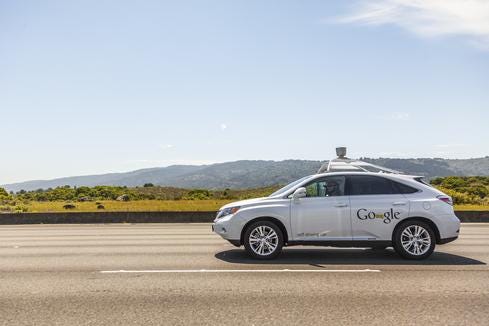Google Self-Driving Cars: 10 Reasons They Go So SlowlyGoogle Self-Driving Cars: 10 Reasons They Go So Slowly
A Google autonomous car was pulled over by police for driving below the speed limit. Why can't they go faster? We explore several theories.


Google, Tesla, Nissan: 6 Self-Driving Vehicles Cruising Our Way
Google, Tesla, Nissan: 6 Self-Driving Vehicles Cruising Our Way (Click image for larger view and slideshow.)
A Google self-driving car was pulled over by police for driving below the speed limit. The vehicle was moving at 24 mph in a 35 mph zone. But really, that's slower than Usain Bolt. It might as well have been a windup toy.
Google posted that its autonomous vehicles move so slowly because the company wants "them to feel friendly and approachable, rather than zooming scarily through neighborhood streets." Fair enough, but this is an important lesson for Google to learn. Going too slow is as bad as going too fast.
Here's an example: Let's say you're in your car, listening to some awesome music, and you turn a corner and come come upon a Google car driving below the speed limit. It's easy to imagine being caught off guard and possibly rear-ending the vehicle or getting into an accident trying to avoid it.
So, why do Google's self-driving cars move so slowly? I have 10 theories that might explain the comapny's logic.
10 Reasons Google's Self-Driving Cars Move So Slowly
1. You can't do "Look ma, no hands!" if you are going too fast. No one will see you.
2. Google Images needs more pictures for the search term "middle finger." It expects to collect a whole bunch as angry drivers pass by its autonomous vehicles.
3. Google is planning to fund the project by suing all the people who rear-end its cars. Now it has to prove a robot car can get whiplash.
4. Google cars don't have robot dogs in them urging them to go faster so they can feel the wind on their snouts.
5. The vehicle is designed to give you that true Driving Miss Daisy experience.
6. If the autonous cars don't go slowly, Google Street View might not pick up all of these wonderful pictures.
7. Let's face it, autonomus cars are basically moving billboards for Google. The slower it goes, the greater the chance other drivers will see it.
[ It might also be to slow down and enjoy the tunes. Read Google Self-Driving Car: A Roadtrip Playlist. ]
8. The car is so busy recording your buying and search habits while you're sitting in it that it doesn't have the bandwidth to drive any faster than it already does.
9. You may have somewhere to get in a hurry, but the car doesn't.
10. Because it didn't take long for someone to post a video of a Tesla car on autopilot "trying to kill" its driver.
**New deadline of Dec. 18, 2015** Be a part of the prestigious information Elite 100! Time is running out to submit your company's application by Dec. 18, 2015. Go to our 2016 registration page: information's Elite 100 list for 2016.
About the Author
You May Also Like






